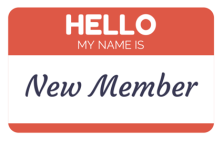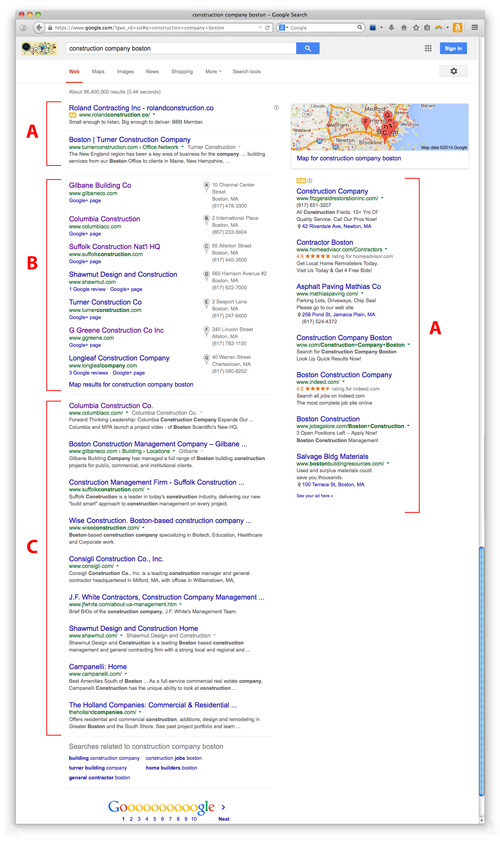SMPS Boston’s blog is moving!
Our bags are packed and we’re ready to go — relocating to our new home as part of the completely redesigned SMPS Boston website!
We’re extremely excited about the new site, which promises to enhance our chapter’s web presence and outreach to our members in every way. Our new blog setup will enhance our ability to deliver enjoyable and valuable posts to you, our readers!
To continue receiving posts from us by email, you’ll need to head over there and re-subscribe via the simple form in the left-hand column.
Thanks to all who have followed us here at WordPress. We hope you will join us in our future explorations of marketing excellence at smpsboston.org.
Celebrating New Members and Anniversaries for December 2014
Every month, Outlook gives a shoutout to all the new members of SMPS Boston, as well as those members celebrating their anniversaries of joining the organization. The brilliant Bianca Girazian of Acentech fearlessly mines our membership database to bring you this list of honor every month.
Welcome to o ur newest SMPS Boston members:
ur newest SMPS Boston members:
- Alexandra Dupnik, Project Manager, Dyer Brown Architects
- Sarah Koelker, Administrative Assistant, BVH Integrated Services
- Brittany Busa, Marketing Coordinator, TG Gallagher
Happy Anniversary to the following members!
1 year:
- Shawn Vetere, Director of Business Development, Knollmeyer Building Corporation
- Eric Wilson, Director of Social Media, New England Real Estate Journal
- Genevieve Cahill, Vice President, BSC Group

2 years:
- Anna Roi, Marketing Communications Manager, Trinity Building + Construction Management
- Christine King, Marketing Manager, BETA Group
- Jennifer Cheek, Marketing Coordinator, ARUP
- Janet Daly, Director of Client Services, TCI/Thompson Consultants Inc.
3 years:
- Thomas Levi, President, Levi + Wong Design Associates
- Kerri Sellers, Marketing Director, Rickes Associates
5 years:
- Vanessa Ryder, Communications Manager, VHB
8 years:
- Karen Euler, Regional Marketing Manager, NBBJ
9 years:
- Howard Levine, Senior Vice President Sales & Marketing, Duncan Galvanizing
10 years:
- Sarah Hotchkiss, Marketing & Business Development Strategist, Commodore Builders
- Jay Moskowitz, Marketing, URS
13 years:
- Susan Shelby, President & CEO, Rhino Public Relations
- Patricia Tracy-Callahan, regional Marketing Manager, VHB
- Melissa Shaffer, East Region Marketing Manager, GEI Consultants
14 years:
- Karen Medeiros, Vice President – National Sales & Marketing Services Director, Gilbane Building Company
20 years:
- Lori Chicoyne, Business Development Director, Kennedy/Jenks Consultants
- Dagmar von Schwerin, Partner, 96pt.
29 years:
- Carol Adey, Vice President, CRESA Partners
Interested in joining SMPS Boston? The benefits go way beyond a blog post shoutout. Learn more here.
Is SEO Worth Your Time?
 Vanessa Schaefer, the President & Creative Director of Clockwork Design Group, has twenty years of experience helping A/E/C and other professional service firms create websites, printed materials, strong corporate brands, and impactful proposals.
Vanessa Schaefer, the President & Creative Director of Clockwork Design Group, has twenty years of experience helping A/E/C and other professional service firms create websites, printed materials, strong corporate brands, and impactful proposals.
The overall goal of SEO, or “Search Engine Optimization”, is to improve a website’s ranking in a search engine’s “organic” or un-paid search results. Most people immediately assume high rankings are something they must have, even if the cost of getting those high rankings is, well, high. But spending marketing time and dollars on SEO should be considered carefully. In some instances, returning high can actually be detrimental to your marketing efforts. Let’s consider SEO, starting from the basics:
Organic versus paid search results
There are two main types of search results, “organic” and “paid”. When I Google the keywords “construction company Boston” here’s what I see:
The two areas marked “A” are paid ads. Also called “Pay-Per-Click”, you must bid on keywords (such as “construction company Boston”, as in this example) and based on the amount you bid and other factors, your listing may appear in the top or right sidebar areas when someone “Googles” for those keywords. Personally, I avoid clicking on paid listings, they are often not at all what I am looking for (note the Asphalt Paving and the Recruiting ad in the sidebar, etc.) The area marked “B” shows organic “Local Search Results”, and the area marked “C” shows the top organic returns. (More info on Local Search is near the bottom of this article.)
How to rank highly, organically
Google makes it very hard to “cheat”. Google constantly changes its algorithms to improve search results for accuracy, relevance, and to prevent ways of spamming the system. Yes, it’s important that your site is built correctly and programmed cleanly, so it is crawlable and includes XML sitemap files. Yes, links from external, credible sites to your site help your rankings (but if they are not credible sites, you can get penalized). Yes, optimizing your site for mobile viewing with responsive design may improve your organic rankings. But more than anything, relevant, fresh, informative content is the most important criterion for improving your organic search results.
It’s a process, not a project
SEO is not a “once-and-done” effort, it is an ongoing activity. The content on your website must be kept current, not stagnant. That means you have to write – often. Plus, you need to blog, Tweet, post to Facebook and LinkedIn, and maybe even add videos to YouTube. It’s work; it takes time; and time is valuable. There’s no silver bullet. Google is too smart for that.
Ranking high… for what?
Often, clients ask me “How can I get my company to rank #1 on Google?” My response is always, “Rank #1 on Google for what?” When considering SEO, step one is to define what you want to return high for. In the example I used above, I searched for “construction company Boston”, and many of the top, big firms showed up. But who, really, would search for “construction company Boston”? Is it a person with a multimillion-dollar budget? Or is it, more likely, someone looking to remodel their bathroom? The last thing you want as a marketer is to spend time and money on SEO, only to be inundated with calls from prospects you don’t want. Think about your clients and what specific services you offer that they might really Google for. For example, if you offer a niche service – something unusual that is hard to find – consider spending more time optimizing for that. Furthermore, if you do have an area of specialty that is B2C, start there for SEO work.
How key are keywords?
It is important that your content be meaningful to your readers. Write for humans, use different words and mix things up. It’s impossible to predict the exact words people may Google for, so don’t waste too much time trying. Concentrate on writing educational, interesting content, not loading keywords onto pages.
Meta descriptions
Meta descriptions are the snippets that show up on search returns under each link. These “Keyword Meta Tags” are important because they help people understand why they should click on your link, rather than the one above or below. However, Google announced back in 2009 that they do not use this information to determine your page ranking. So craft these tags as you would any marketing headline: to entice your target audience.
Local search tips
Here are a few tips to help you rank in Local Search Results: Your website must be rich with relevant content, you can’t get around that. Be sure to include your company’s name and address (I like to add that to the footer of every website I design so it’s on every page.) In addition, be sure to list your company on Google+ Local, Yahoo Local, Bing, and review sites like Yelp, and make sure your listings are exactly the same — Google is looking for consistency in your NAP (Name, Address, and Phone number). To check for inconsistencies, go to Yext.com. Include NAP on social media (Facebook, Twitter, LinkedIn). Get reviews on Google+ and Yelp.
Think “thought leadership”, not search returns
At Clockwork Design Group, we work primarily with B2B professional service firms including A/E/C, legal and financial firms. The work they do is extremely specialized; the projects are typically complex and very costly. Thus, few credible new business prospects find them on Google. Rather, prospects usually have a “short list” of firms they know and like, and supplement with referrals from trusted advisors.
So why spend time and money on SEO? Although your target prospects may not be “Googling” to find you, relevant, educational content is still necessary to build trust and win business. Savvy business people are on the web every day reading articles, news, blogs, and more. Significant projects are awarded to service firms that have strong brands and reputations. That’s how we get on the short lists. By writing pertinent content, your firm grows a reputation as a thought leader, and you stay top-of-mind with your clients and prospects. By doing so, you are also improving your SEO.
For some great insights to SEO, check out the free PDF book “17 SEO Myths You Should Leave Behind in 2015” by HubSpot.
If you enjoyed this article, check out more from Vanessa Schaefer on Outlook!
Find out more about Vanessa and Clockwork at their website, or continue the conversation on Twitter: @cdgi
SMPS Boston Wants to Hear From You
 SMPS Boston is surveying our membership. But we’d also like to hear from non-members!
SMPS Boston is surveying our membership. But we’d also like to hear from non-members!
What do you find valuable about the chapter? What could we do better? What types of events would you like to see in the future? And what opportunities would you like to seize to take part in SMPS Boston’s programming?
Voice your choice to help us deliver the best value for you. And if you complete the survey by January 8, you’ll have a chance to win a prize!
Click here to fill out the survey. It only takes 10 or 15 minutes, and the chapter will greatly benefit from your insights!
Voice from the Trenches: Create Change By Admitting You Are the Problem
Voice from the Trenches is a monthly series written by Valerie Conyngham, CPSM. Valerie is Marketing Manager at The Cecil Group, an urban design and planning firm in Boston.
How do you ignite change in your organization? It’s a big question, with lots of answers. But, the first step is recognizing the problem.
You know there are problems. They might be small, medium or large. They’re there, looming over your head. You think about the problems and the potential solutions. You catch yourself saying “if only [fill in the blank], then I could fix the problem.” No matter how much thought you put into it, you’re still in the same place in three months, six months, even a year later. That’s because you haven’t developed the actions to start realizing the change.
It’s OK not to change. But if you choose not to change, you at least need to take ownership that you are the problem. Don’t take it personally! I don’t mean you as an individual, I mean you as a department or you as a firm.
Change is hard, no one really likes it, yet it’s integral to growth. In our industry, time is consumed producing billable work. Many firms have the mentality of billable before everything. That mentality makes it hard to embrace new technologies or processes, because the learning curve is certain to result in (albeit short-term) lower utilization rates. We get stuck in the now and forget the future. We know we would eventually save time/money/resources, but something holds us back.
What’s holding you back? Is it fear of failure? A perception that there are better things to do? Lack of a long range plan to look to for guidance? We all know that change is hard. But it’s not impossible. There are many things you can do to start implementing change. Think about this year’s stalled projects, and make 2015 the year you get those projects back on track.
Here are some tips to get you started.
1. Articulate the problem statement
First things first, you need to clearly articulate the problem you are trying to solve. Make sure you frame it in a way that people will care about. To do that, you need to show how this is a problem for them, not just you.
2. Find a champion and a supporter
It’s important to get buy-in for your project. Start at the top and sell it to leadership. Get a firm principal to be the champion of your project and s/he can tell others how important it is to the firm. Then you can fill the role of supporter and get the project done.
3. Create a plan
Change often fails because there’s no plan on how to implement it. Put together a plan that thinks though all the steps and all the potential obstacles. The better prepared you are, the easier implementation will be.
4. Create small wins
When creating your plan, keep in mind the small wins. It’s easier to implement change if you can obtain a series of small wins. Celebrate them so that people feel their contributions are proving successful. This will give people encouragement to keep the project moving.
5. Change habits
Most change is about changing or creating new habits. Think about what it is you’re trying to change or create, then think about people’s habits and the triggers. If you can identify a trigger and change or create a new habit for that trigger, then you’ve won.
Connect with Valerie through LinkedIn or on Twitter @valconyngham.
Favorite Five: Debug Your Brain
 Elena Lelchuk is a Marketing & Public Relations Manager at Commodore Builders and the Chair of the SMPS Boston Communications Committee.
Elena Lelchuk is a Marketing & Public Relations Manager at Commodore Builders and the Chair of the SMPS Boston Communications Committee.
Every month, she compiles her favorite five links from the last 30 days in a series we call, very creatively, Favorite Five!
You can connect with Elena through Twitter (@ell923) or LinkedIn.
This month, my Favorite Five teaches you how to increase your productivity, how to add interactivity to your marketing materials, and how to avoid holiday clichés. Consider this my festive gift to you.
#1. “How To Debug Your Brain And Get More Done” by Oliver Emberton
Deadlines, events, holiday parties multiplied by 10! That’s December for many of us — and frankly, pretty much Fall as a whole. Now is the time to teach yourself how to identify what’s urgent and important, and what probably can wait.
#2. “15 video marketing trends for 2015” by Kevin Allen
Are interactive videos the next big thing? I wouldn’t argue it! Images and videos are more successful, and as we all know, including an image with your message = more clicks! I’ve always been an avid supporter of engaging, short and sweet marketing content. We have taken this approach at Commodore: check out our latest episode of On-Location Innovation. A little self-promotion here, but it was relevant! 🙂
#3. “A Three-step Marketing Ladder” by Seth Godin
(1) Awareness, (2) Education, (3) Action…one can’t go without the other!
#4. “The Death of the Single-source Story” by Glenn Leibowitz
Not only do multiple point of views make a story more credible, but it will also make your story more attractive to your audience and to a wider audience. Next time you are write about recently completed project, don’t forget to include your project team’s perspectives.
#5.”6 dos and don’ts of holiday PR” by Michelle Garrett
‘Tis the Season, but try and avoid the clichés! Make sure your email doesn’t get lost in the impending flood of Holiday Greetings!
Presidential Thoughts: Aspire
 Benjamin Sawa is the Corporate Development Manager at GEI Consultants and the President of SMPS Boston. This is his second Presidential Thoughts column of the year.
Benjamin Sawa is the Corporate Development Manager at GEI Consultants and the President of SMPS Boston. This is his second Presidential Thoughts column of the year.
SMPS Boston recently held its first New Member Orientation Program of the year – and, as far as we can tell, it was the first in our Chapter’s history as well!
Out of the 30 or so attendees, there was quite a mix of people in attendance, including recently minted members, people who had been members for a year but maybe never made it to an event, and even prospective members. I was amazed at the diversity of the group and how many new faces were out there. I couldn’t help thinking that somewhere in this group were the future leaders of this organization. But I also felt concern that left to their own devices, these people might merely represent untapped potential. My biggest takeaway from the Orientation event was that our chapter needs to show each person the value of SMPS: what it can do for them both professionally and personally, and what it can do for their firms.
This brings me to SMPS Boston’s mission for 2014-2015. Over the course of the summer, the Board of Directors met three times to discuss overarching strategy and planning for the upcoming year. A central theme that kept coming up was the need to move the Chapter forward by investing in our members, our programming, and the chapter as a whole.
 So we came up with simple word – Aspire – to reflect this charge. We thought collectively: how can we strengthen our membership and create meaningful value for you? How can we grow a more engaged group of members and volunteers? How can we advocate and promote our members’ achievements in their firms? How can we, as an organization, aspire to be the best that we can for our membership? And how can we inspire YOU to aspire to be the best that you can be?
So we came up with simple word – Aspire – to reflect this charge. We thought collectively: how can we strengthen our membership and create meaningful value for you? How can we grow a more engaged group of members and volunteers? How can we advocate and promote our members’ achievements in their firms? How can we, as an organization, aspire to be the best that we can for our membership? And how can we inspire YOU to aspire to be the best that you can be?
We have an exciting New Year coming up at SMPS, full of programs that support this goal. Here are just a few of the things that we have planned for you in the months to come:
- Launch of the new SMPS Boston website, which will be much more user-friendly.
- Continuation of our successful Building Leaders Series and other educational programming that will help you build skills and knowledge
- Increased scholarships and other member investment activities
- An assortment of networking opportunities, from regular Mix@6s to our Annual Holiday Party
- A super regional conference that represents the collective efforts of 9 SMPS chapters, right here in Boston.
Stay tuned for even more, and I hope to see you at an upcoming event!
Questions or suggestions for Ben? He can be reached at bsawa@geiconsultants.com.
For more from Ben, check out his Career Ideas series.
Celebrating New Members and Anniversaries for November 2014
Every month, Outlook gives a shoutout to all the new members of SMPS Boston, as well as those members celebrating their anniversaries of joining the organization. The brilliant Bianca Girazian of Acentech fearlessly mines our membership database to bring you this list of honor every month.
Welcome to o ur newest SMPS Boston members:
ur newest SMPS Boston members:
- Samantha Godin, Electrical Engineer, BVH
- Jennifer Kaplan, Marketing Coordinator, Sasaki Associates
- Kristin Armitage, Senior Marketing Coordinator, Arrowstreet
- Lisa Quackenbush, Owner and President, cuePR
Happy Anniversary to the following members!
1 year:
- Jael Ballard, Administrative Coordinator, Lavallee Brensinger
- Florence Di Johnson, Director of Marketing, JACA Architects

3 years:
- Vanessa Gulati, Marketing Specialist, CDM Smith
5 years:
- A. Krista Sykes, Competitive Analyst and Researcher, Architecture in Context
- Frances Harrison, CMO, SMRT
7 years:
- Leann Fisher, Marketing Coordinator, SMRT
- Christopher Capullo, Marketing Coordinator, Nobis Engineering
- Tom Palanger, Director of Marketing, J.C. Cannistraro
10 years:
- Kara McLellan, Director of Marketing & Communications, Utile
- Kerri Keane, Marketing Manager, Bowdoin Construction
11 years:
- Jennifer Hegarty, Marketing Manager, Payette
12 years:
- Danna Day, Director of Marketing, Copley Wolff Design Group
14 years:
- Rebecca Bozadjian, Director of Marketing, VHB
- Matthew Hawk, Deputy Marketing Manager, Fay Spofford & Thorndike
15 years:
- Ted Gentry, Principal, Ted Gentry Associates
18 years:
- Charles Crevo, Retired, Emeritus Member
Interested in joining SMPS Boston? The benefits go way beyond a blog post shoutout. Learn more here.
A CPSM Story: How Failing Led to Success (Part II)
 This two-part chronicle comes to us from Barbara Hicks, CPSM, the Director of Marketing and Media for Margulies Perruzzi Architects. Barbara has spent the past decade applying her talents in marketing, graphic design, social media and branding to drive MPA’s fast-paced, award-winning efforts.
This two-part chronicle comes to us from Barbara Hicks, CPSM, the Director of Marketing and Media for Margulies Perruzzi Architects. Barbara has spent the past decade applying her talents in marketing, graphic design, social media and branding to drive MPA’s fast-paced, award-winning efforts.
As you read in Monday’s blog post, I took the CPSM exam and failed. I wrote off CPSM forever…for about three days; that’s how long it took for me to remember why I started down this road in the first place.
When my second study group got together, I was ready. I read every single word (many of them for a second time) and actively participated in each session. I took notes until my hand almost fell off, and then studied those notes until I was blue in the face. When I didn’t understand something, I asked the group questions. When I didn’t like their answers, I pushed harder. This time, I got way more out of the experience than I expected. I really learned about the six domains of professional services marketing. The reading inspired new ideas for my career and for my firm. When discussing strategy and implementation, I’m better able to think holistically about how each task affects other initiatives, people, and my company.
Passing the test became less important than what I was getting out of the material. Bonus: I passed anyway.
Here are some tips, tricks, and personal stories for how I got through reading the material and taking the exam…twice.
Tips for surviving until the exam
- Make yourself accountable to someone. In my case, I felt like I owed it to my boss, my Mom, and especially Jennifer Shelby, CPSM.
- Participate actively in the study groups. These people are going through the same thing and have varying points of view, ways of learning, and ideas that you haven’t thought of.
- Read the material. Sounds obvious, but even if you know every single tiny thing there is to know about the proposal process, the material will still do one of two things:
- Teach you something you didn’t already know
- Validate the way you are already doing things
- Take thoughtful notes. No need to write down the things you already inherently know, just focus on the things you don’t. Once you are finished reading, study just your notes until the exam.
- Understand your weaknesses. Take the practice exams and really do the research into why you got a particular question wrong.
Tips for staying motivated
- Treat yourself to some serious study breaks. When you are tired and want to throw the book across the room, do it! I fell into an interesting pattern in wanting to save all the reading for the weekends to keep my weeknights free. I would read two sections, then watch an episode of “Breaking Bad.” Read two more sections, watch another episode. Walter White became my reading reward every Saturday.
- Take action in your job. As you read, you will naturally want to flag concepts and ideas in the book that are applicable at your company. Make those things a reality and benefit from both outcomes: using this newfound knowledge in your job makes you feel more confident, and you look like a rock star at work implementing new initiatives.
- Remember, it’s not just you. Some of the questions are weird. Some of the right answers seem wrong. Some of the questions make it seem like every answer is right. We are all in the same boat. You aren’t the only one questioning practice exams or the reading itself. This is really where your study group comes in handy, they are by your side when you need to understand a complex idea, vent, or even have a stiff drink after a session.
- Remember your goals. You aren’t walking into a CPSM study session with blinders on. You have a reason for being interested and wanting to pass the exam. Remember those reasons when you start to doubt if it’s worth it (you WILL doubt it, but it IS worth it).
If I can do it, you can do it. If you fail, try again. Your mother didn’t raise a quitter. My mom didn’t!
For more posts from our CPSMs, click here.
A CPSM Story: How Failing Led to Success (Part I)
 This two-part chronicle comes to us from Barbara Hicks, CPSM, the Director of Marketing and Media for Margulies Perruzzi Architects. Barbara has spent the past decade applying her talents in marketing, graphic design, social media and branding to drive MPA’s fast-paced, award-winning efforts.
This two-part chronicle comes to us from Barbara Hicks, CPSM, the Director of Marketing and Media for Margulies Perruzzi Architects. Barbara has spent the past decade applying her talents in marketing, graphic design, social media and branding to drive MPA’s fast-paced, award-winning efforts.
My name is Barbara Hicks and I’m proud to say that I can now write “CPSM” after my name. I read the material, I followed along with the study group, I studied hard on my own, and I failed. And then, I repeated the process, and passed. This is a story about my CPSM journey: why I wanted it, how hard I worked for it, and why you should follow in my footsteps (well, some of them anyway).
“CPSM – What the heck is that?!” my friends ask. Being a Certified Professional Services Marketer does sound a little strange and even geeky to folks outside of our industry, but those of us in the know understand its significance. I first heard about it from my good friend and colleague, Jennifer Shelby, CPSM of Rhino PR, who was starting SMPS Boston’s first CPSM committee and study group. I had seen the designation before but had no idea what it was. After discussions with her, I thought about all the good having that designation could do for me: maybe it could advance my career, or even get me a raise. As hollow as those goals may sound, I was shocked at how much more I gained from the entire experience, not just having the designation after my name, but all that I would learn and do through the entire process.
Getting certified takes a tremendous amount of time and energy, and I thought I was ready for it. I went to the CPSM Info Night to learn what lay ahead. First, I had to apply to even be able to sit for the exam, requiring transcripts, letters of reference, etc. Once accepted came the hard part: the reading. It seemed endless. The recommended reading list contains nine books, the most important of which has over 600 pages. Six. Hundred. Pages. About marketing. Flipping through that book you’ll find single-spaced Times New Roman type, small margins, and almost no graphics. Sounds like fun right? Breaking up this amount of reading over 6 study group sessions seemed manageable, and so I began.
I stayed on track, at first. I took notes and made flash cards like I was in college again. The further I got in the reading, my goals seemed to change. I was really learning valuable information that I use day to day in my job! What’s better is that I was learning about industry best practices. But as each study session grew near, I found myself getting lazier with finishing each chapter. In this industry for 12 years, and being a Senior Associate and Director of Marketing and Media with MPA, I admit, I got a little cocky. I have plenty of experience. I do this every day. I don’t need to read every single word. I’ll be fine. I was totally wrong. I thought I had worked hard, I thought I had studied more than enough. I took the test with the rest of my study group and missed a passing grade by two points. I thought, “Well, see ya never CPSM. I’m done.”
It took me a few days to rebound. I was embarrassed and just wanted to forget the whole thing. But, I forged relationships in that study group. I told my boss I was trying for it. Friends and colleagues in the industry wrote reference letters as part of my application process. I felt that in failing the exam, I was failing them too. So I got over myself and tried again, this time with a completely different attitude.
Stay tuned for what the next “chapter” was like for me (pun intended), including some tips and tricks for sticking with it and staying motivated.
For more posts from our CPSMs, click here.





